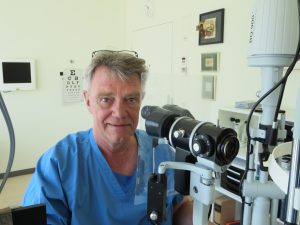Dermot McGrath
Published: Sunday, June 28, 2020

Jesper Hjortdal MD,PhD
Progress is being made on several fronts to advance understanding of the complex pathogenesis of keratoconus, including identification of a novel biomarker that may prove useful as a supplemental diagnostic test for the disease, according to Jesper Hjortdal MD, PhD.
“Keratoconus remains an elusive disease where differentiation between association, cause, and effect is challenging and varies between individuals. Our research has identified a potential biomarker called Prolactin-Induced Protein (PIP), which seems to influence enzymes affecting corneal structure and homeostasis,” he said in a presentation at the World Ophthalmology 2020 Virtual Congress.
Studies have shown that saliva, tears and serum samples reveal hormone imbalances in keratoconus patients, explained Prof. Hjortdal.
“We are intrigued by the versatile function of PIP and the fact that it is regulated profoundly in keratoconus patients. The clinical significance of these observations is important and targeting PIP directly or indirectly may prove effective not only in early disease stages but also in advanced keratoconus stages,” he said.
Using PIP as a biomarker for keratoconus and/or a therapeutic target would represent a significant paradigm shift in keratoconus research, added Prof. Hjortdal.
He added that a lot of progress has also been made in epidemiological studies carried out in Denmark in recent years.
“We know for instance that non-Europeans have more than threefold higher odds of keratoconus compared to Europeans, and that atopic dermatitis. allergic rhinitis and asthma are common among patients with keratoconus. The good news, however, is that keratoconus is not associated with higher mortality in Denmark,” he said.
Tags: keratoconus biomarker
Latest Articles
Organising for Success
Professional and personal goals drive practice ownership and operational choices.
Read more...
Is Frugal Innovation Possible in Ophthalmology?
Improving access through financially and environmentally sustainable innovation.
Read more...
iNovation Innovators Den Boosts Eye Care Pioneers
New ideas and industry, colleague, and funding contacts among the benefits.
Read more...
From Concept to Clinic
Partnerships with academia and industry promote innovation.
Read more...
José Güell: Trends in Cornea Treatment
Endothelial damage, cellular treatments, human tissue, and infections are key concerns on the horizon.
Read more...
Making IOLs a More Personal Choice
Surgeons may prefer some IOLs for their patients, but what about for themselves?
Read more...
Need to Know: Higher-Order Aberrations and Polynomials
This first instalment in a tutorial series will discuss more on the measurement and clinical implications of HOAs.
Read more...
Never Go In Blind
Novel ophthalmic block simulator promises higher rates of confidence and competence in trainees.
Read more...
Simulators Benefit Surgeons and Patients
Helping young surgeons build confidence and expertise.
Read more...

 Jesper Hjortdal MD,PhD
Jesper Hjortdal MD,PhD